When ideas meet and join together
Viviana Varese, teetotaller, Enrico Bartolini, moderate drinker, Matteo Baronetto, pragmatic taster.
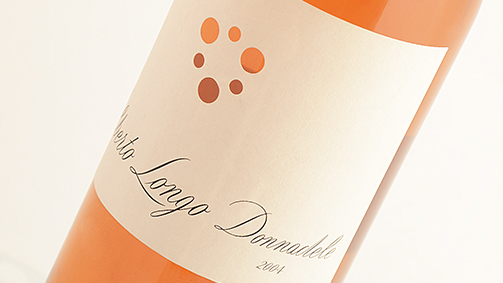
This was the combination that led my mind to skirt over some ideas that have little to do with cooking but a great deal to do with aesthetics. Structural aesthetics, the aesthetics of a perfect game, a fantastic equilibrium, like snowflakes: not a single one is the same as another.
“When ideas have sex” is how Matt Ridley explained the value of exchange in the generation of collective intelligence or systemic intelligence as Peter Senge defines it. People retain their own diversity while working together, based on a common thought that emerges from their interactions and this extends their capacity, impacts on their interests, behaviour, without standardising them, giving rise to the emergence of a form of complicity.
Let’s return to the kitchen and, speaking with these chefs about the complicity between food and wine, between them and the sommeliers, between the aesthetics of wine and the aesthetics of food, two common values emerge: sharing and freedom.
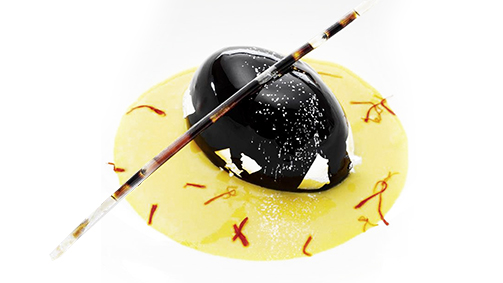
Picture: a Viviana Varese creation
Freedom seems to be the manifesto of Viviana Varese and Sandra Ciciriello, her partner and sommelier, a very feminine precept and something of a necessity, given that Viviana doesn’t sample wine. Sandra decides, selects her cellar and, in that choice, both the past and the present are very important. Sandra was a fishmonger and taught the art of discovering, loving and choosing fish to Viviana. She knows every shade of flavour of this central ingredient in the cuisine of “Alice”. This enables her to create “dishes” in her mind, mental storyboards built on taste, intuition and the story of the individual wines. A picture in which the aesthetics are manifest in their most subtle and manifold representation: food.
Viviana invents and creates in complete freedom with the knowledge, the certainty, that the wines suggested by Sandra, with her very personal style, will glorify her creations. We all remember the “panino Bruciato”, Viviana’s ugly duckling, which gave rise to a unique experience of taste, a journey through Alice’s “wonderland”, accompanied by ever more varied flavours of wines selected with great mastery by Sandra. At the table, only at the table, the magic of the encounter occurs.
How does Viviana define this union? Winning.
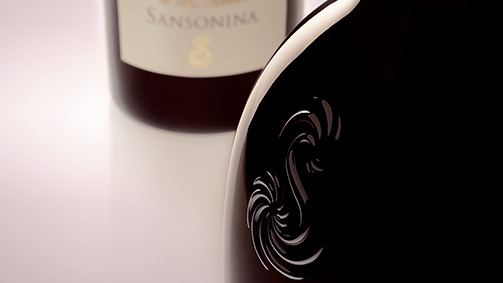
Enrico Bartolini acknowledges the great communicative power of the aesthetics of the table, the soul of the contents of the dish, accessible through the aesthetic choice. He loves to deliver a degree of surprise to his guests with something not entirely unknown so that it leave traces, it creates a furrow of remembrance in the minds of those who taste it. In this skilful work of sensations, account must be taken of the technical or instinctive consistency, of aromas and tastes, of internal and external sounds, of factors that influence and change the approach to the dish. Enrico is a passionate artist, and his passion extends to wine. “I collaborate with Pino Savoia (manager of the wine lover’s hall) and Giusy Romano sommelier. Being a moderate drinker and keen wine lover, I often throw in hints and tips. I realise I can be very pretentious. The ability to select and suggest wine “for others” really lies in understanding the wishes of others and being convincing with real taste. These are the characteristics I find in the team who help me run my business.”
The aesthetics of food and aesthetics of wine are winning combinations, even though the concept of what is good and fine is subjective. Enrico can’t bear bad or ugly things.
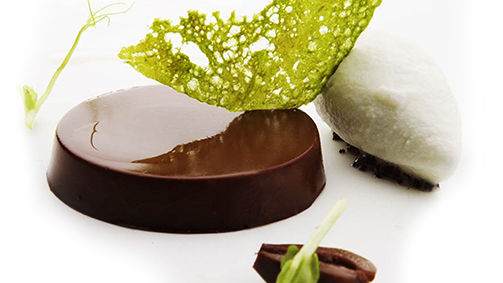
Picture: a Matteo Baronetto creation
From an attentive, creative, imaginative chef of Cracco, this calm, pragmatic dimension that sets his style apart from the crowd is not surprising. Matteo daily consults Alberto Piras, a highly trained sommelier, always ready to study, innovate and be curious. They put their shared approach down to having a “nose” for the work. Their work is similar, sustained by constant research and discovery, they know something will go together by instinct, what will work as a natural combination, and that it isn’t always true that “those who quarrel come closer together”. Cuisine is an “assembly” of products, with the wine to accompany it chosen on the basis of two different philosophies: a wine for each course or just 2 wines to go with several courses. Matteo and Alberto opt for the latter. Selections arise from a very complementary approach, an interchange of ideas and shared objectives. It is a form of collaboration that generates enthusiasm, they work in a ferment of development, fully aware of the change. Wine isn’t drunk just for drinking, but as a function of the food. The food accentuates the wine, the coupling gives a unique character to the dish.
As a matter of culture, here at Cracco, the quality of the raw materials are paramount, even if this is to the detriment of the aesthetics of a dish. Natural products, for example, have more muted colours, but the aesthetics here are the result of a multiplicity of factors and values that are visibly represented by objects and forms, but must be confirmed by content and taste.
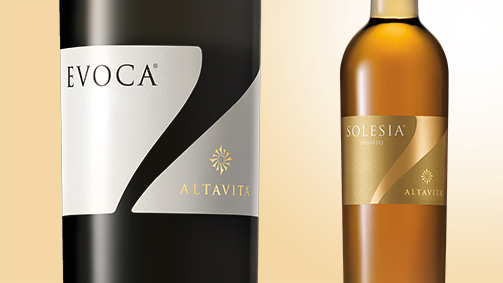
All the chefs agree that, at the table, wine has a fundamental role, just like the opening scene of an opera. Everyone is silent, holding their breaths and ready to be excited by the first entrance. The gesture and images in these first moments will decide the reaction of the spectators, one way or another. A wrong note, the wrong bottle, will change the balance and dispel the magic of complicity achieved through mastery.
Tag Interview


